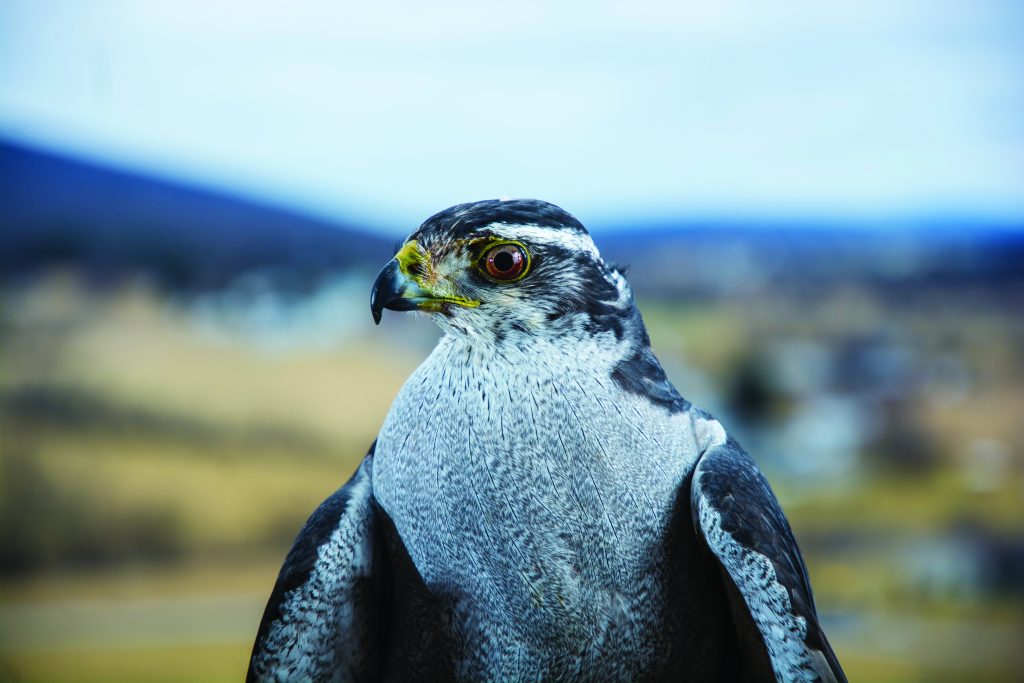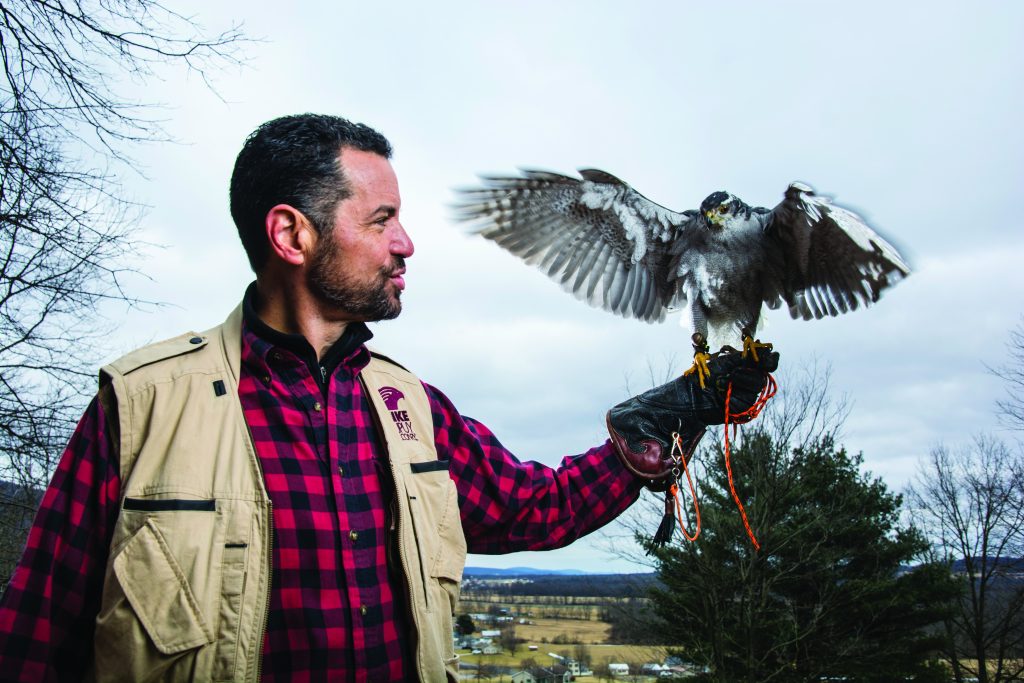Of all the birds of prey found throughout Pennsylvania, the Northern Goshawk may be the most elusive — not a surprise for a bird nicknamed the “ghost of the forest.”
But a growing number of experts are becoming concerned that the goshawk population is trending dangerously low — recent studies seem to back that feeling.
A 2016 trend map posted on the Raptor Population Index website (www.rpi-project.org) is littered with red icons suggesting a drastic decline in the goshawk numbers — averaging more than 10 percent decline each of the past 10 years throughout our state, Maryland and West Virginia.
“Most of the hawk watch sites have reported significant declines in the Northern Goshawk over the past 10 years,” said Dr. Laurie Goodrich, director of longterm monitoring at Hawk Mountain. “We looked around last year for nesting individuals in areas where there were nests 15 years ago — and couldn’t find a single nest.”
Dr. Laurie Goodrich, director of longterm monitoring at Hawk Mountain
David Brinker, a wildlife ecologist in Maryland, has studied population trends in the hawk community for three decades.
“Goshawks used to nest south of Route 80 in Pennsylvania, but to my knowledge, no one has found an active nest in that region in quite a few years,” he said. “It isn’t just a Pennsylvania issue. It is regional. In fact, one of the premier places to spot goshawks has always been Hawk Ridge in Duluth, Minnesota. But the numbers have drastically declined there, too.”

How To Identify A Goshawk
- Large (bigger than a crow), heavy-bodied.
- Overall slaty grayish above and pale grayish below.
- Distinct whitish eyebrow set off by dark cheek and cap.
- Long, broad, barred tail, fluffy white undertail feathers.
- Note broad wings, often appearing pointed at tips
- Rarely soar, usually seen below tree canopy.
- Flight is fast and agile, making identification difficult.
- Call excitedly near nest area: “kak kak kak…”
Theories abound

Mike Dupuy, a longtime falconer out of Middleburg, PA, has devoted quite a lot of his own time to searching for goshawks throughout heavily forested regions of Snyder and Union counties, along with plenty of land in the Allegheny forest in the western part of the state.
“Goshawks are known for being harder to spot. They tend to stick to denser forests and stay below the tree line. They aren’t as likely to be found in more active areas,” he said.
The reason for the decline in goshawk populations is a mystery, but there are several theories that seem to justify the trends, according to Dupuy and Brinker.
“One is the game commission’s reintroduction of the fisher. They were eradicated at one point, but now their populations are growing quite a bit,” said Dupuy. “In fact, in five goshawk nests that were closely monitored through studies, we have visual evidence of fisher predation on chicks.”
That alone doesn’t prove that fishers alone are the cause of the goshawk’s decline, according to Brinker.
“Two out of the five nests isn’t a big enough sample size to suggest that the fishers are the primary issue, but it is definitely something that is likely making an effect,” he said.
Another theory that coincides with the noticeable decline of goshawks starting in the year 2000 is the growing spread of West Nile Virus.
“Grouse is a key prey animal for the goshawk, as are crows and red squirrels — all of which have been affected by the increase in West Nile Virus,” said Dupuy. “Not only does that lower the food supply for goshawks, but it is a blood meal for them. They don’t cook their meat beforehand like we do, so whatever is found in the prey goes into them.”
Dupuy has seen, first-hand, the effect of West Nile Virus on goshawks he owns.
“I had five birds die,” he said. “When I suspect West Nile Virus, I swab the throat and send it off to a friend who is a pathologist. Four of the birds tested positive for the virus. I had another one that went partially blind.”
“It isn’t a coincidence that the goshawk numbers started to really tail off after the year 2000 and West Nile Virus started becoming prevalent around the same time,” added Brinker.
Dupuy suggested another reason for the goshawk’s decline — the loss of hemlocks and other conifers throughout the state.
“Ten years ago, you could walk around Tall Timbers (in western Snyder County) and find huge, majestic hemlocks. You go now, and most of them are dead,” he said. “There is an invasive white nymph-looking bug that is systematically taking out hemlocks throughout the state. The pictures are just depressing — all you see are skeletons of huge trees. It is like a toothpick garden.
“Goshawks thrive in hill and valley regions in about a 36 percent hemlock environment.”
Both Brinker and Dupuy admitted that the goshawk reduction is likely due to a combination of issues.
“Fishers, West Nile and conifer loss all play a part, and that doesn’t even factor in what we’re doing to the environment through fracking, logging and poaching,” said Dupuy. “It has become the perfect storm of things all at the same time.”
Making a difference
While the goshawk numbers haven’t encountered the endangered level yet in our state, it has in neighboring Maryland. Changing that trend before it gets worse starts with education, but the biggest need, according to Dupuy, is to invest real funds and skill sets into the cause.
“If we are committed to understanding what is happening, we have to fund what is going on with science. We need biologists who know what they are doing — like those of Dave Brinker’s ability — to get involved,” he said. “We can’t put it all on student researchers or citizen birders to get an accurate picture of what is going on and how to tackle it.”
That being said, one of the biggest assets to those who are actively studying the goshawk’s plight is for those who frequent the outdoors to share any goshawk sightings.
“If you plan to be out fishing or hunting or hiking in our heavily wooded areas, we need you to report any sightings of birds that look like goshawks,” said Goodrich. “We don’t have the resources it takes to do a completely study of the state, so we have to rely on those who want to make a difference and protect our natural resources.”


